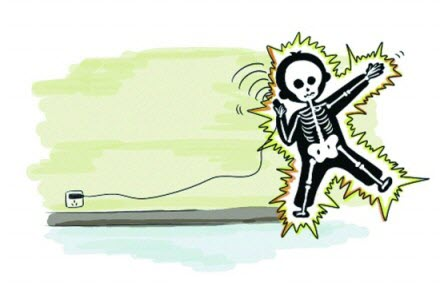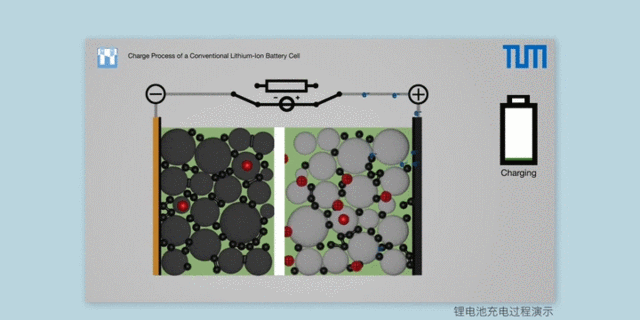Address
304 North Cardinal St.
Dorchester Center, MA 02124
Work Hours
Monday to Friday: 7AM - 7PM
Weekend: 10AM - 5PM

A news titled for “a foreign girl who unfortunately died of an electric shock by holding the USB interface in her mouth” spread widely on SNS, although soon someone confirmed that the so-called “electric shock event” in the news and related pictures All are false, but rumors about the quality of mobile phone chargers are still everywhere. We invite experts from technical institutions to distinguish the true and false of these rumors for you today.
Expert for verification: Liu Huwei (Engineer of Shanghai Institute of Quality Supervision and Inspection Technology)
The first thing to be clear is that the chargers that have been certified (CE/RoHS/FCC/UL/GS etc) to meet the requirements of the national mandatory safety standards will generally not present the risk of electric shock under normal use. The output about 5V for a safety extra-low voltage of a qualified charger, the maximum contact current from the primary (220V grid power) to ungrounded accessible parts (USB output port) is 0.25 mA. (Note: According to the experiment of the International Electrotechnical Commission, the cardiac fibrillation current caused by the human body is 50 milliamperes). In addition, qualified chargers isolate the dangerous voltage circuit (220V grid power) from the safe and special ground voltage (USB output port) through reinforced insulation or double insulation, which is safe for the human body. Even if you touch the USB port with your hand or mouth, although the impedance of the human body formed by the hand or mouth to the ground is different, the contact current is slightly different, but it is a very weak safety current, and generally will not cause electric shock injury.
For poor chargers that do not meet the national quality standards, due to their electrical insulation properties, heat and flame resistance properties, etc., it is generally difficult to meet the requirements of the national standards, so there is a safety risk.

Electric shock is caused by the passage of electric current through the human body, and the physiological response it causes depends on the magnitude and duration of the electric current and its path through the human body. The current depends on the applied voltage and the impedance of the power supply and the impedance of the human body. It takes about 0.5 mA and above to produce a response in a healthy human body. For a good chargers that meet the requirements of national standards, the maximum contact current from primary (220V grid power) to ungrounded accessible parts (USB output port) is 0.25 mA, so there is no leaking in a qualified chargers.

For a qualified chargers that pass certified, there is no safety risk in theory while making calls or operating mobile phones while charging, but we do not suggest this usage habit. Due to the large instantaneous current passing through when making a call, it is easier to cause frequent charging and discharging of the battery, the charger is overloaded for a long time, and the heat generation increases, which will affect the performance or life of the battery and the charger.

Electronic products normally heat up under working conditions. In the national safety standard, the temperature limit is specified through the “heating requirement” clause. Specific to the plastic casing of the mobile phone charger, which is the outer surface of the device that may be touched, the contact temperature limit is 95℃+Tamb-Tma, (Note: Tamb is the ambient temperature during the test; Tma is the manufacturer’s technical specifications The maximum allowable temperature or 35°C, whichever is higher. Reservations for equipment not used in tropical climates or 25°C, whichever is higher).
However, poor chargers are generally difficult to meet the technical requirements due to the heat and flame resistance of the materials, so there are still safety risks.

Due to the mature production technology of charger products and components, the certified charger has a longer use life under normal use. However, if consumers prefer to “mixed use” chargers for different devices, such as using chargers that do not match the electrical parameters to charge mobile phones (especially if the nominal output current of the charger is less than the input current of the mobile phone), or making a call while charging, it is more likely to cause the charger Long-term overload and heating will accelerate the aging of the product, cause the performance of the parts to decline, and shorten the life. Therefore, it is recommended to use the original charger or a charger with matching electrical parameters, and avoid prolonged charging, bad usage habits, etc., to ensure the safety and performance of the charger and the battery.

After the battery is fully charged, the charger will generally have a “trickle current” to continue to charge the battery. Although the current is small, frequent operations like this will affect the performance and life of the battery to a certain extent. In addition, if the charger is not unplugged or it will be in a hot state for a long time, it will also accelerate its aging and affect performance.

If you want to know more info, you can consult Ideal, thank you!